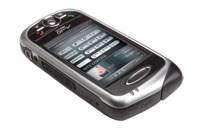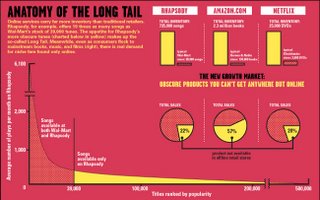The idea would be to
promote a mock up event such as health
awareness week by targeting supermarket users with
dietary information that has specific relevance to them and their current buying trends.
Concept One: Consumers in
today's shopping market often use online shopping as a way of making their shopping easier, all they have to do is go online order their food and wait for it to arrive at their door. This means that organisations such as
Tesco's this have an insight into the buying trends of the consumers; once these consumers have selected the items they want and sent it of to
Tescos or other
supermarkets that provide an online service, the information could be collated and summarised in terms of how much of their
dietary needs consumers have
satisfied by what they have
ordered. Is their a high
presense of
cholesterol in the foods they have selected or maybe their is a lack of protein? The results of this could be sent back to the user via mobile devices such as
PDA's and mobile phones, or back to their computers via e-mail. Thus informing the users of
what is lacking in their diet and re-enforcing the message of health
awareness week through providing case specific
statistics that are
useful to consumers rather than bombarding them with boring
health leaflets.
Primary Technologies Utilised: Web, E-Mails, Mobile Phones,
PDA's,
SMS Messaging.
Benefits for Company's/Event: The interesting thing behind this concept is that both
party's are set to
benefit and it could be a
mutually beneficial project. Firstly organisations
such as
Tescos or other supermarket chains will benefit from the co-branding of their online service and the themes and connotations of an event such as health
awareness week. They will appear to have the customers
health and best interests at mind. The event of health
awareness week would benefit from the publicity it would gain from such large organisations, and would have a far longer reaching message and
benefit to
consumers if the service was to
continue post event.
Technology Utilised by Target Audience: The fact that these users are using the web to order their shopping suggests that they are open minded to the use of technology, and therefor are more likely than not to possess the technology required to target them with the campaign, such as mobiles or
PDA's.
Concept Two: This concept would target users in the shop as opposed to those buying food online. Firstly the consumer would conduct their shopping as usual,
Tesco's have recently incorporated "self pay" terminals, this would be incorporated into the second step, users scan their food at the self pay terminal and a
dietary summary of the foods selected is provided prior to the user finalising purchase. The next step would consist of
recommendations of food purchases to help balance out the consumers overall diet. Users are then given the option to
receive directions to these foods in the supermarket via their mobile devices. The message of Health
Awareness week could be conveyed through the terminals
themselves of via consumers mobile devices. Offshoot promotion could
consist of advertising the
function to users via the web or other media platforms.
Primary Technologies Utilised: Web, Mobile Phones,
PDA's,
SMS Messaging, Sat
Nav.
Benefits for Company's/Event: Again both the campaign and the businesses involved are set to benefit, which is
crucial to the marketability and commercial viability of the scheme, and to its
success. The campaign could benefit from advertising through the serve yourself terminals, as well as co-branded sms messages to the consumers. Tesco's would stand to gain from the coporate image gained by co-branding with such a campaign, and if the scheme was to be succesful then consumers may continue to benefit from the dietry advice offered.
Technology Utilised by Target Audience: The fact that these users are using a self pay terminal to purchase products suggests that they are open minded to the use of technology, and therefor are more likely than not to possess the technology required to target them with the campaign, such as mobiles or PDA's.



